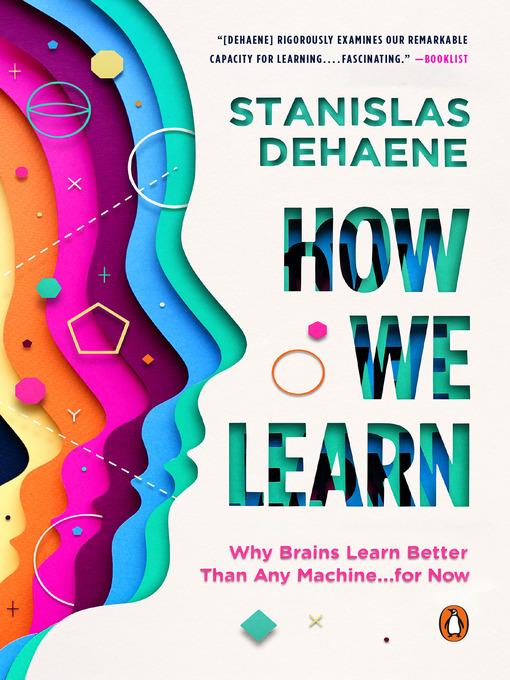
How We Learn
Why Brains Learn Better Than Any Machine . . . for Now
کتاب های مرتبط
- اطلاعات
- نقد و بررسی
- دیدگاه کاربران
نقد و بررسی

October 28, 2019
Dehaene (Consciousness in the Brain), a professor of experimental psychology at the Collège de France, devotes this detailed, sometimes hard-going, but stimulating study to the science of learning. The first half largely concerns brain physiology, touching on, among other subjects, how learning can physically change the brain, such as by thickening the cortex. Dehaene also refutes the idea of the “blank slate” infant brain, noting that “even a baby... encodes the external world using abstract and systematic rules—an ability that eludes... conventional artificial neural networks.” The book’s second, less technical and more widely accessible half explores the “four pillars” of learning: attention, active engagement, error feedback, and consolidation of information (for which REM sleep is especially key) and discusses how enjoyment can assist learning—Dehaene notes that laughter seems to enhance curiosity and memory. While calling for more research into the field, he issues his most potentially controversial pronouncement, at least for neurodiversity advocates: “We all face similar hurdles in learning and the same teaching methods can surmount them.” At times not an easy book to comprehend, it will nonetheless be a richly instructive one for educators, parents, and others interested in how to most effectively foster the pursuit of knowledge. Agent: Max Brockman, Brockman, Inc.

November 1, 2019
Computers learn, but they will not hold a candle to humans for the foreseeable future, according to this expert overview of learning. Dehaene (Cognitive Psychology/Collège de France (Consciousness and the Brain: Deciphering How the Brain Codes Our Thoughts, 2014, etc.) emphasizes that a fly can learn and that a newborn's brain contains a great deal of information thanks to several billion years of evolution. Unfortunately, he writes, "evolution adapts each organism to its ecological niche, but it does so at an appallingly slow rate." However, "the ability to learn...acts much faster; it can change behavior within the span of a few minutes, which is the very quintessence of learning." Never mind our opposable thumb, upright posture, fire, tools, or language; it is education that enabled humans to conquer the world. "We are not simply Homo Sapiens, but Homo docens--the species that teaches itself," writes the author. Short-term memory of a literate person is almost double that of someone who has never attended school. IQ (a supposedly fixed concept) increases several points for each additional year of education. In the first of the book's occasionally dense but mostly accessible sections, Dehaene defines learning as simply forming an internal model of the outside world. In the second, he describes how learning occurs. A computer leaves the assembly line as a blank slate, but a newborn's brain already possesses circuits enabling it to generate abstract formulas and the ability to choose wisely from those formulas according to their plausibility. The third section defines "four pillars of learning" that make our brain the most effective learning device. "Attention" carefully selects relevant signals. "Active engagement" (i.e., curiosity) generates hypotheses. "Error feedback" corrects the mental model when the world violates our expectations. Finally, "consolidation," which involves sleep as a key component, transfers knowledge to long-term memory, freeing neural circuits for further learning. The best educators, whether parents or teachers, follow these principles, and the author urges their general adoption. Dehaene's fourth insightful exploration of neuroscience will pay dividends for attentive readers.
COPYRIGHT(2019) Kirkus Reviews, ALL RIGHTS RESERVED.

December 1, 2019
Movies like The Matrix and The Terminator chillingly prophesy an apocalyptic war between smart machines and Homo sapiens, and such a battle may be inevitable. But cognitive neuroscientist Dehaene (Consciousness and the Brain, 2014) believes that artificial intelligence (AI) still has some catching up to do. "Our brains remain, for the moment at least, the fastest, most effective, and most energy efficient of all information processing devices." He rigorously examines our remarkable capacity for learning. The baby brain is especially awesome and not a "blank slate." Humans are born with well-organized brain circuits, core knowledge, and intuitive logic. The brain of a baby has abilities that current AI systems lack, including acquiring abstract concepts and social learning. Some peculiar (and unsettling) animal experiments are chronicled, including one in which young owls were fitted with prism glasses that shifted their visual fields. Dehaene concludes, "In the Promethean battle between the computer chip and the neuron, the machine and the brain, the latter still has the advantage." Though it can be challenging, Dehaene's portrait of the human brain is fascinating.(Reprinted with permission of Booklist, copyright 2019, American Library Association.)

























دیدگاه کاربران